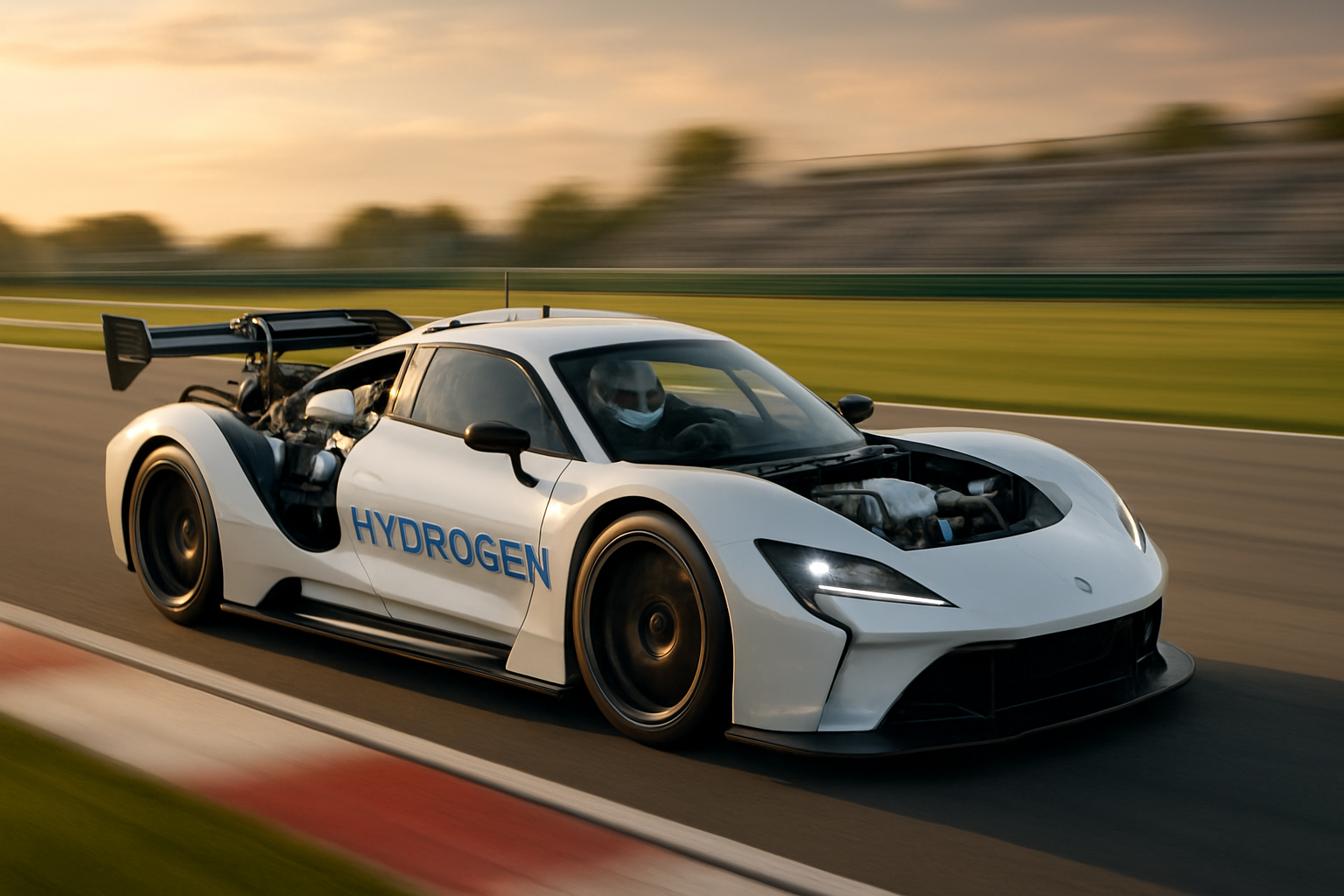Harnessing the Power of Hydrogen in Racing
The roar of engines, the scent of burning rubber, and the thrill of high-speed competition have long defined motorsports. But what if we could maintain that excitement while dramatically reducing environmental impact? Enter hydrogen-powered racing cars, a cutting-edge technology that's poised to revolutionize the track. This isn't just about swapping fuel sources; it's about reimagining the very essence of motorsport performance and sustainability.

The Science Behind Hydrogen Power
At its core, hydrogen power in racing cars relies on the principle of fuel cells. These devices convert hydrogen and oxygen into electricity, with water vapor as the only byproduct. This process is not only clean but also highly efficient, offering a power-to-weight ratio that rivals traditional combustion engines. The result is a racing machine that can deliver blistering acceleration and top speeds without the environmental drawbacks of fossil fuels.
Hydrogen fuel cells work by combining hydrogen from onboard tanks with oxygen from the air. This chemical reaction produces electricity, which powers electric motors that drive the wheels. The technology allows for rapid refueling, crucial in racing scenarios where every second in the pit counts. Moreover, the high energy density of hydrogen means that cars can maintain competitive ranges without sacrificing performance.
Overcoming Technical Hurdles
While the potential of hydrogen in racing is enormous, engineers have had to overcome significant challenges to make it viable on the track. One of the primary hurdles has been storage. Hydrogen must be compressed or liquefied to achieve the energy density required for racing, which demands specialized tanks that can withstand high pressures while remaining lightweight.
Safety has been another critical concern. Hydrogen is highly flammable, necessitating robust safety systems and protocols. Racing teams and governing bodies have worked tirelessly to develop fail-safe mechanisms, including advanced sensors and emergency shutdown procedures, to ensure the safety of drivers and spectators alike.
Performance on the Track
Early skeptics questioned whether hydrogen-powered cars could match the performance of their gasoline-fueled counterparts. However, recent advancements have silenced many doubters. Hydrogen racing cars have demonstrated impressive acceleration, with some prototypes achieving 0-60 mph times comparable to top-tier combustion-engine vehicles.
Perhaps even more impressive is the endurance potential of hydrogen power. In long-distance races, where efficiency is as crucial as speed, hydrogen cars have shown remarkable stamina. The ability to refuel quickly and maintain consistent power output over extended periods gives hydrogen a distinct advantage in endurance events.
Environmental Impact and Sustainability
The environmental benefits of hydrogen racing extend beyond just reducing emissions on race day. The technology is driving innovation in sustainable hydrogen production methods, including electrolysis powered by renewable energy sources. This green hydrogen production chain could have far-reaching implications, not just for motorsports but for the broader automotive industry and beyond.
Racing series that adopt hydrogen power are also playing a crucial role in public perception and acceptance of the technology. As fans witness the capabilities of hydrogen-powered vehicles on the track, it helps to dispel myths and build enthusiasm for hydrogen as a viable alternative fuel in everyday transportation.
The Future of Hydrogen in Motorsports
As hydrogen technology continues to evolve, we can expect to see its presence grow across various racing disciplines. Formula 1, known for its cutting-edge innovations, has already expressed interest in exploring hydrogen power as part of its sustainability strategy. Other series, such as the 24 Hours of Le Mans, have announced plans to introduce hydrogen-powered categories in the coming years.
The impact of hydrogen racing extends beyond the confines of the track. Motorsports have long served as a testbed for automotive technologies that eventually make their way into consumer vehicles. The advancements in hydrogen fuel cells, storage solutions, and safety systems developed for racing will likely accelerate the adoption of hydrogen technology in passenger cars and commercial vehicles.
Conclusion
Hydrogen-powered racing represents a thrilling convergence of high-performance competition and environmental responsibility. As the technology matures and more racing series embrace hydrogen, we stand on the cusp of a new era in motorsports. One where the passion for speed and the drive for sustainability coexist, pushing the boundaries of what’s possible on four wheels.
The future of racing is not just about who crosses the finish line first, but how we get there. Hydrogen power offers a path forward that doesn’t compromise on the excitement and challenge that make motorsports so captivating. As we look to the horizon, the prospect of witnessing hydrogen-powered cars battling it out on tracks around the world is not just a possibility—it’s an inevitability that promises to redefine the very essence of racing.





